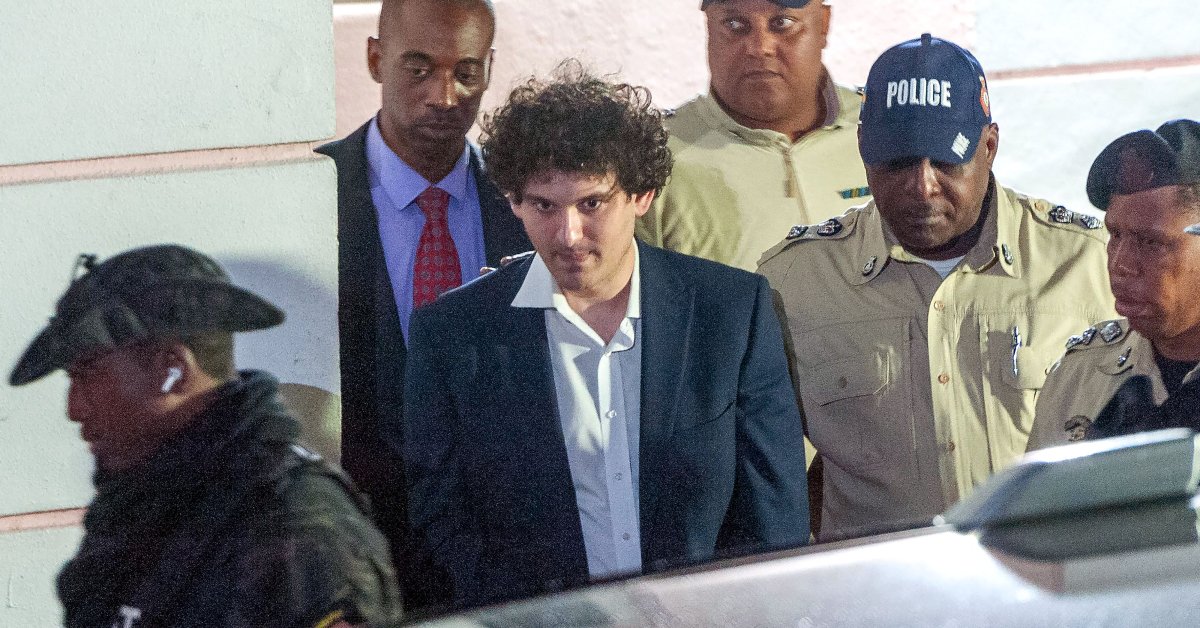The collapse of the crypto exchange FTX seemed to materialize out of nowhere: Within one week in November, FTX transformed from one of the most respected and trusted parts of the crypto industry to a bankrupt disgrace that lost more than $8 billion of its customers’ money, according to authorities.
Large chunks of the money went to pay off risky bets made by Alameda Research—the hedge fund started by FTX’s founder Sam Bankman-Fried. But increasing evidence suggests that the collapse of the highly controversial TerraUSD stablecoin—which some critics likened to a Ponzi scheme—months earlier may have started a chain reaction financial crisis that brought down FTX and Alameda.
The links between the crash of the highly speculative TerraUSD and FTX—a much more mainstream player in the crypto market—could help explain how FTX’s losses mounted so quickly—and why it will be exceedingly difficult for FTX customers to get their money back.
Crypto investigators including Niklas Polk, who is part of a team at the blockchain analytics firm Nansen, have been on the trail of FTX’s missing billions by tracking transactions recorded on the blockchain. Polk recently co-authored a report containing evidence that after TerraUSD collapsed, hundreds of millions of dollars in crypto were transferred from FTX to major crypto lenders.
While much of the press coverage has focused on Bankman-Fried’s political donations and Bahamian real estate empire, it appears that those expenses paled in comparison to Alameda’s debts following the Terra crash. Whether specific customer deposits can be linked directly to Alameda’s debt repayments remains to be determined.
Where did the money go?
FTX, founded in 2019, allowed consumer investors to buy cryptocurrency and took deposits—similar to the way traditional financial institutions work. Alameda was created two years before FTX, and was founded by Bankman-Fried as a quant trading firm that made big bets on various parts of the crypto ecosystem.
Perhaps the biggest outstanding question from FTX’s bankruptcy is “where did the money go?” And the first part of that answer regulators say they know already. The Commodity Futures Trading Commission (CFTC) alleges in a complaint filed last week that most of the lost customer deposits ended up being used to cover risky bets and debts for Alameda Research.
FTX and Alameda were supposed to operate separately from one another, but Nansen found a slew of blockchain evidence that the companies have been entwined since FTX’s inception, with funds flowing freely between them. Alameda Research used FTX’s funds as an unlimited line of credit, the CFTC alleges. Alameda was the only account on the platform that was allowed to have a negative balance, according to the CFTC.
Bankman-Fried claims that the co-mingling of funds between Alameda and FTX was not purposeful, but resulted from his and others’ misreading of “confusing internal labeling,” he told Reuters.
In a crypto bull market, billions of dollars flowed freely amongst market participants, allowing Alameda’s use of FTX funds to go largely unnoticed and unquestioned. But in May 2022, the stablecoin TerraUSD collapsed, causing a domino effect that wiped out over $400 billion in value in the crypto ecosystem. A stablecoin is so named because it is supposed to stick to the value of the U.S. dollar. Stablecoins are a crucial part of the crypto ecosystem: when they work correctly, they provide traders with the option of parking their volatile crypto assets in a more stable currency.
While some stablecoins are fully backed with dollars being held in an account, TerraUSD was algorithmic, meaning that it relied upon code, market activity and sheer belief in order to keep its peg to the dollar. The stablecoin’s peg was also theoretically propped up by its algorithmic link to another currency, Luna—but many experts questioned the stability of such a system.
Read More: What We Can Learn from Terra’s Fall
Several major industry players including Three Arrows Capital and Voyager Digital filed for bankruptcy as a result of TerraUSD and Luna’s crash. The ensuing chaos forced many crypto lenders to call back their loans. Alameda was one of the companies forced to pay up, the CFTC says. The agency alleges that Alameda did not have the cash on hand to service its debts—and that in May or early June at Bankman-Fried’s direction, Alameda directly pulled several additional billion dollars worth of FTX user funds to pay off its debts. (Bankman-Fried has repeatedly denied that he “knowingly” transferred FTX user funds to Alameda.)
Afterward, FTX’s internal books showed that Alameda owed $8 billion to FTX. But in order to hide this hole, FTX executives isolated it into a folder called “our Korean friend’s account,” according to the CFTC. (This may be a reference to Do Kwon, the embattled Korean co-founder of TerraUSD and Luna.) Due to this change, the debt no longer showed up on FTX’s ledgers, the agency alleges.
A crash, then a flurry of transfers
Over the last couple months, Polk and other analysts at Nansen have been tracking money flows from FTX to Alameda. They published their findings in an extensive report on Nov. 17, which shows the many frantic transactions that FTX made following the TerraUSD crash. In particular, FTX transferred hundreds of millions of dollars worth of cryptocurrency first to Alameda and then to the trading firm Genesis, which had served as a major lender to many crypto companies.
Polk says that these transactions suggest that FTX user funds might have been deployed to pay off a massive debt to Genesis. Whether that happened cannot be known for certain yet—partly because any decisions that FTX or Genesis made internally—including the reasons that certain transfers were made—are outside the blockchain and represent a “black hole” to crypto investigators.
“We can say there’s money flowing from Alameda to Genesis in that time frame, which they got from FTX. But you cannot say if it was their money or user funds,” Polk says. “And since Genesis is centralized, we cannot say for certain if it was used to pay back which loans. But since it was a lender, we can at least assume it was used for that purpose.”
In an additional twist, the New York Times reported earlier this month that federal prosecutors are investigating whether Bankman-Fried manipulated the markets of TerraUSD and Luna. (Bankman-Fried told the Times he was not aware of, and did not intend, any market manipulation.) The Times cites an unnamed source who alleges that it was Bankman-Fried’s cryptocurrency trading firm that shorted Luna, or placed a giant bet on it falling, thus causing TerraUSD and Luna to crash and setting off a slew of ripple effects that led to FTX’s own demise.
This link has also yet to be proven. “We studied the Terra / Luna crash here but did not find ties to Alameda on-chain, but instead came to the conclusion that (at least on-chain) there was no single evil perpetrator to be found,” Polk wrote in a follow-up email to TIME. “But it could have just happened off-chain.”
A representative for FTX did not respond to a request for comment.
Clawing back payments
FTX, under new management, and federal agencies are now working to recover FTX funds that might be returned to customers. FTX claims it has recovered $1 billion in assets—a fraction of the $8 billion or more missing. Some $3.1 billion is owed to the company’s top 50 creditors, according to a bankruptcy filing from FTX last month. (It’s unclear whether that $3.1 billion is part of the $8 billion or separate.) Newly-appointed CEO John Ray III says FTX could owe money to more than one million people and businesses.
But it now seems likely that much of the money routed from FTX to Alameda is no longer in the hands of the latter company—especially if it was used to pay off debts that were incurred following the Terra-Luna crash.
Timothy Howard, a partner at the law firm Freshfields and a former federal prosecutor with the U.S. Attorney for the Southern District of New York, says that getting money back from third parties to return to customers is possible but complicated. “The Department of Justice is committed to providing restitution to victims of fraud. If assets go to third parties and are proceeds of a crime, they’re potentially forfeitable,” he says. “But third parties can exert an innocent owner defense—if they weren’t involved in the crime or had no knowledge or reason to know they were receiving proceeds of a crime—to dispute forfeiture.”
In a congressional hearing last week, Ray alleged that Alameda spent much of the money it received from FTX users, making it much harder for the money to be returned. “At the end of the day, we are not going to be able to recover all the losses here,” Ray said. “There was money spent that we will never get back.”
—With reporting by Nik Popli
More Must-Reads From TIME



